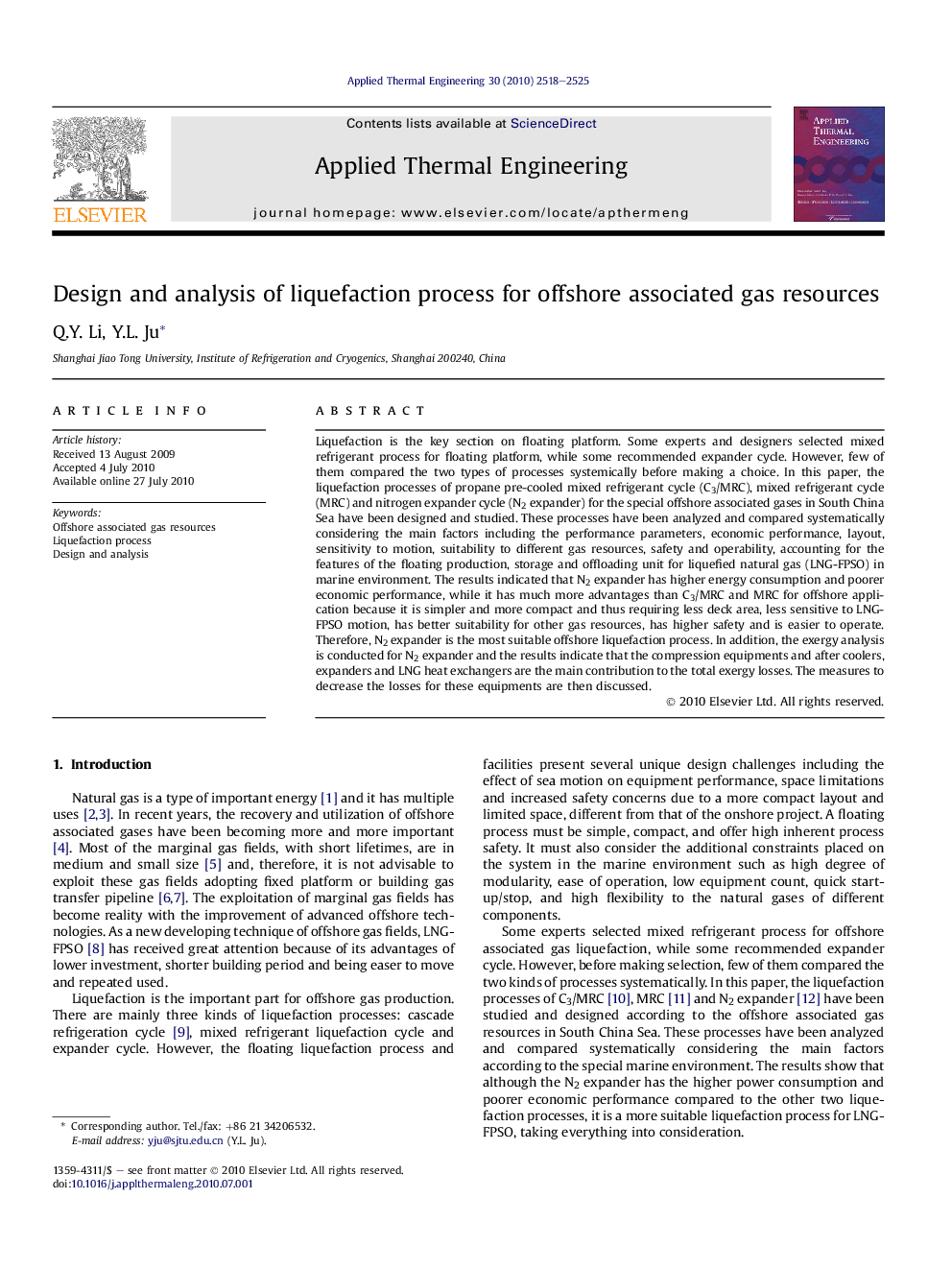| Article ID | Journal | Published Year | Pages | File Type |
|---|---|---|---|---|
| 648185 | Applied Thermal Engineering | 2010 | 8 Pages |
Liquefaction is the key section on floating platform. Some experts and designers selected mixed refrigerant process for floating platform, while some recommended expander cycle. However, few of them compared the two types of processes systemically before making a choice. In this paper, the liquefaction processes of propane pre-cooled mixed refrigerant cycle (C3/MRC), mixed refrigerant cycle (MRC) and nitrogen expander cycle (N2 expander) for the special offshore associated gases in South China Sea have been designed and studied. These processes have been analyzed and compared systematically considering the main factors including the performance parameters, economic performance, layout, sensitivity to motion, suitability to different gas resources, safety and operability, accounting for the features of the floating production, storage and offloading unit for liquefied natural gas (LNG-FPSO) in marine environment. The results indicated that N2 expander has higher energy consumption and poorer economic performance, while it has much more advantages than C3/MRC and MRC for offshore application because it is simpler and more compact and thus requiring less deck area, less sensitive to LNG-FPSO motion, has better suitability for other gas resources, has higher safety and is easier to operate. Therefore, N2 expander is the most suitable offshore liquefaction process. In addition, the exergy analysis is conducted for N2 expander and the results indicate that the compression equipments and after coolers, expanders and LNG heat exchangers are the main contribution to the total exergy losses. The measures to decrease the losses for these equipments are then discussed.
